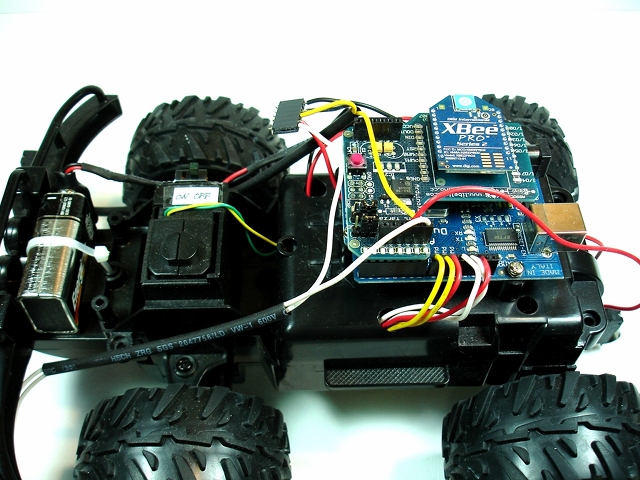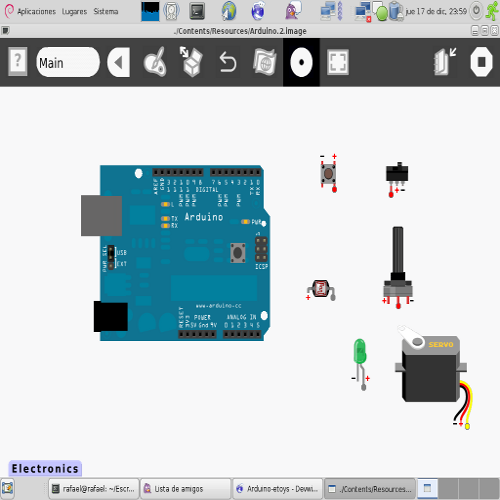”
Uno Punto Zero
Dear Friends of Arduino
On the first day of 2010 we look back at five amazing years where Arduino has gone from being an idea into our heads to become a widely used platform for hardware learning and experimentation.
We set out to build a platform that helps people get stuff done without having too much focus on the technology used to get it done. We’re pleased to see many people have managed to do just that.
We have faced a happy challenge as the platform has seen more widespread use. We get more and more very qualified contributions and valuable suggestions from a many different sources. It is difficult to satisfy everyone while avoiding the platform bloat that we sought to avoid in our original goals. We believe we have been quite successful at keeping Arduino true to its roots, incorporating suggestions and contributions but still keeping it simple. Arduino has reached a reasonable level of stability and reliability, and it’s time to crystalise the work done so far and to graduate, as the title in Italian says, to 1.0
What does this mean for Arduino?
We plan to stabilise the API and the current IDE so that for the foreseeable future the reference, the examples, the tutorials and the books you buy should stay consistent. This will help people who are teaching, wiriting tutorials and books to stay up to date for longer. We will obviously fix bugs and add new boards to the core as they appear and you should expect everything in 1.0 onward to work properly.
At the same time this allows us to open up other streams for developing “experimental” distributions that are more cutting edge that are more appealing to people with more experience that are willing to trade some stability with more performance and new features.
The schedule for 1.0 release will be as follows: we’ll start a public discussion on the API for 1.0 which will last into February. At that time, we’ll summariseall the suggestions, and incorporate those that we consider coherent with the philosophy of simplicity and ease of use.
In march, during the NYU spring break, we’ll meet up at ITP in New York to exchange notes and test our assumptions followed by a social event somewhere in town (we’ll have more details about this as we are organising it right now)
We should expect to be able to go “Uno punto Zero” by June.
We also recognise that our website has been in need of love for quite a while and we have started working on a new infrastructure where we’ll better integrate its three main elements (Main site, forum and playground) both graphically and technically. A new forum platform is in the works as we try to find a solution that will let us migrate all the immensely valuable content of the current forum without losing a single bit of it.
The main website will become, in the long run, a much more general resource for people learning about Physical Computing and Arduino. There are some amazing tutorials on the playground and around the web, collecting and organising them will provide us with a great resource for learners and we hope to recognize those contributions by including more of them in the main site
Hardware-wise we’re working on some new ideas on how to make Arduino even simpler to use and more affordable. At the same time we’re looking at how, applying the Arduino Philosophy, we can make some other areas of technology more approachable for everybody.
Today everyone of us is working on their new years resolutions, these are ours and we hope you’ll be excited as we are to work on it.
Massimo on behalf of the Arduino team
Uno Punto ZeroDear Friends of Arduino
On the first day of 2010 we look back at five amazing years where Arduino has gone from being an idea into our heads to become a widely used platform for hardware learning and experimentation.
We set out to build a platform that helps people get stuff done without having too much focus on the technology used to get it done. We’re pleased to see many people have managed to do just that.
We have faced a happy challenge as the platform has seen more widespread use. We get more and more very qualified contributions and valuable suggestions from a many different sources. It is difficult to satisfy everyone while avoiding the platform bloat that we sought to avoid in our original goals. We believe we have been quite successful at keeping Arduino true to its roots, incorporating suggestions and contributions but still keeping it simple. Arduino has reached a reasonable level of stability and reliability, and it’s time to crystalise the work done so far and to graduate, as the title in Italian says, to 1.0
What does this mean for Arduino?
We plan to stabilise the API and the current IDE so that for the foreseeable future the reference, the examples, the tutorials and the books you buy should stay consistent. This will help people who are teaching, wiriting tutorials and books to stay up to date for longer. We will obviously fix bugs and add new boards to the core as they appear and you should expect everything in 1.0 onward to work properly.
At the same time this allows us to open up other streams for developing “experimental” distributions that are more cutting edge that are more appealing to people with more experience that are willing to trade some stability with more performance and new features.
The schedule for 1.0 release will be as follows: we’ll start a public discussion on the API for 1.0 which will last into February. At that time, we’ll summariseall the suggestions, and incorporate those that we consider coherent with the philosophy of simplicity and ease of use.
In march, during the NYU spring break, we’ll meet up at ITP in New York to exchange notes and test our assumptions followed by a social event somewhere in town (we’ll have more details about this as we are organising it right now)
We should expect to be able to go “Uno punto Zero” by June.
We also recognise that our website has been in need of love for quite a while and we have started working on a new infrastructure where we’ll better integrate its three main elements (Main site, forum and playground) both graphically and technically. A new forum platform is in the works as we try to find a solution that will let us migrate all the immensely valuable content of the current forum without losing a single bit of it.
The main website will become, in the long run, a much more general resource for people learning about Physical Computing and Arduino. There are some amazing tutorials on the playground and around the web, collecting and organising them will provide us with a great resource for learners and we hope to recognize those contributions by including more of them in the main site
Hardware-wise we’re working on some new ideas on how to make Arduino even simpler to use and more affordable. At the same time we’re looking at how, applying the Arduino Philosophy, we can make some other areas of technology more approachable for everybody.
Today everyone of us is working on their new years resolutions, these are ours and we hope you’ll be excited as we are to work on it.
Massimo on behalf of the Arduino team
”
LINK





